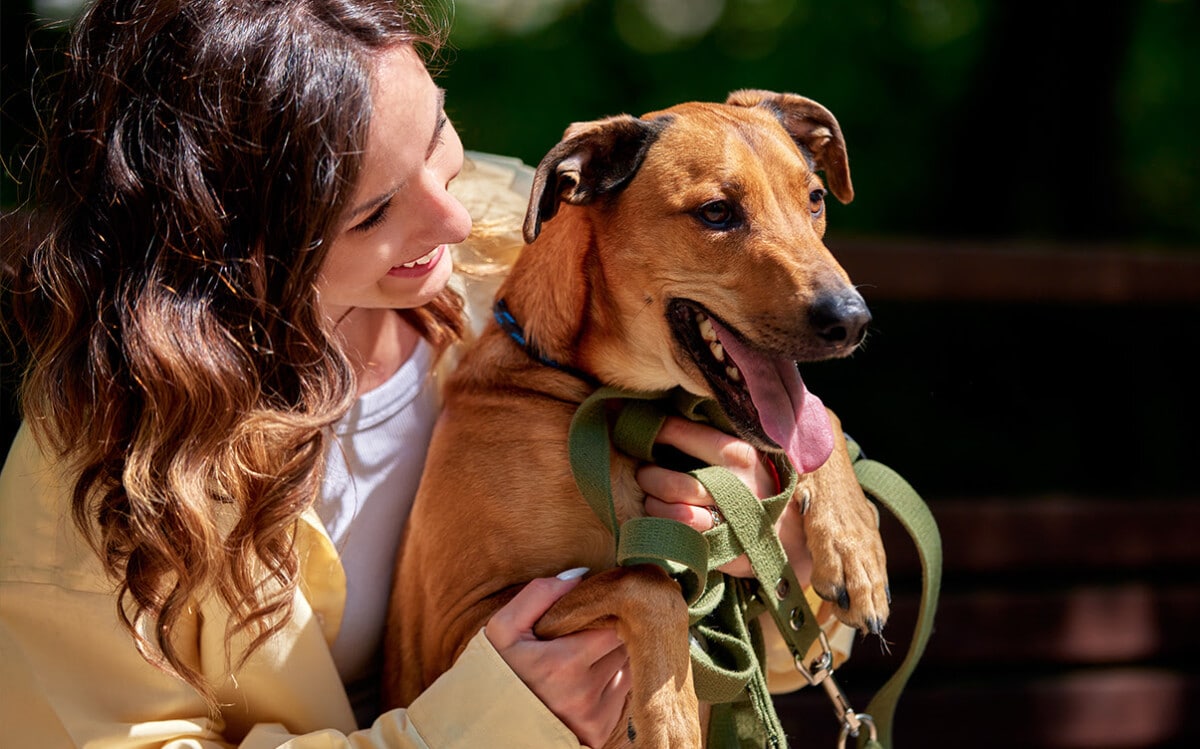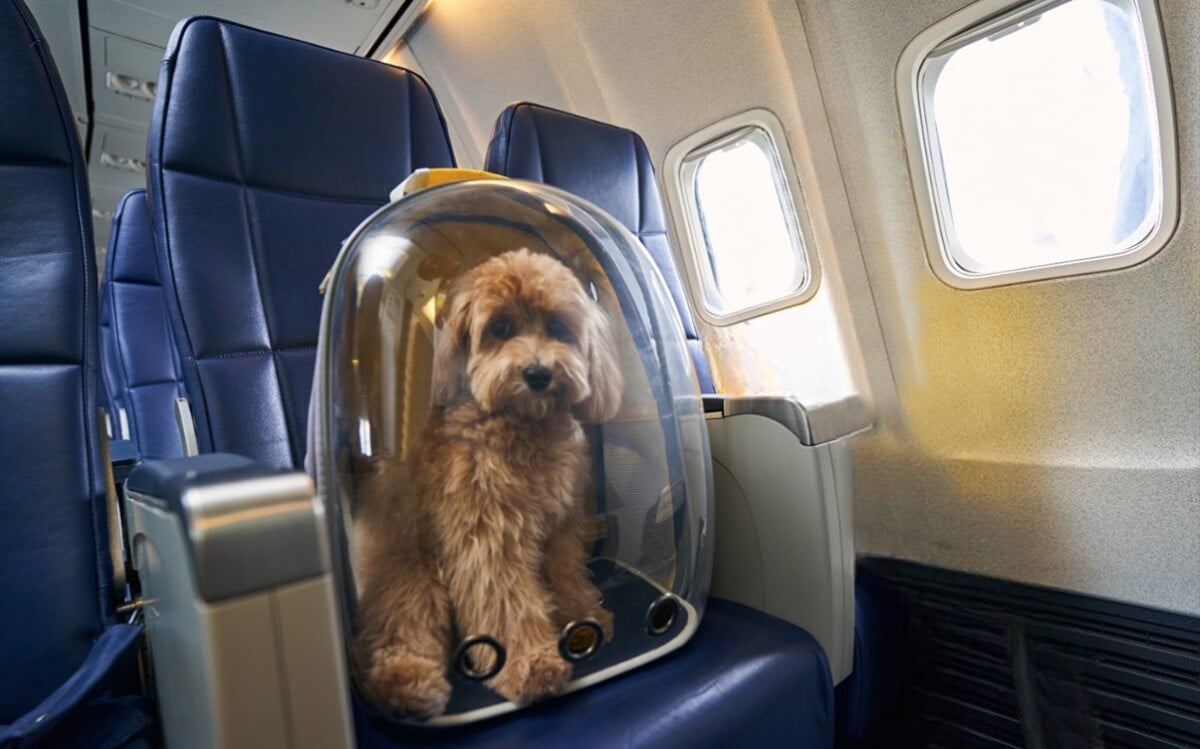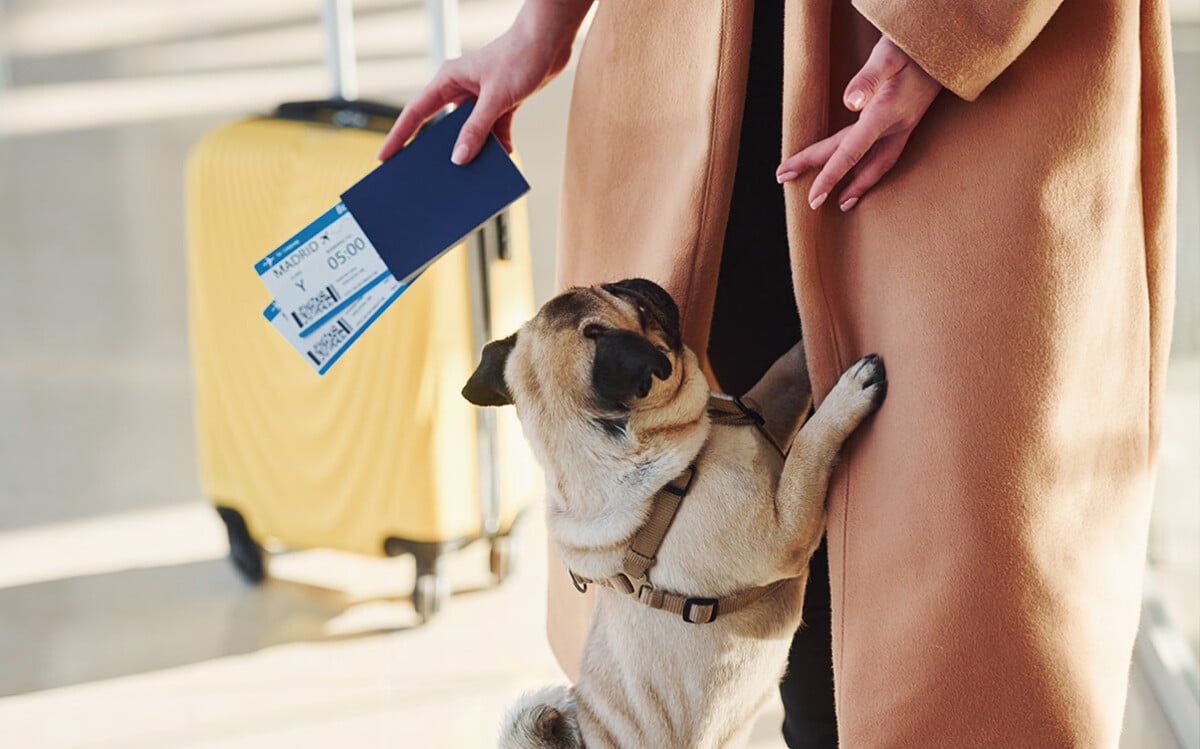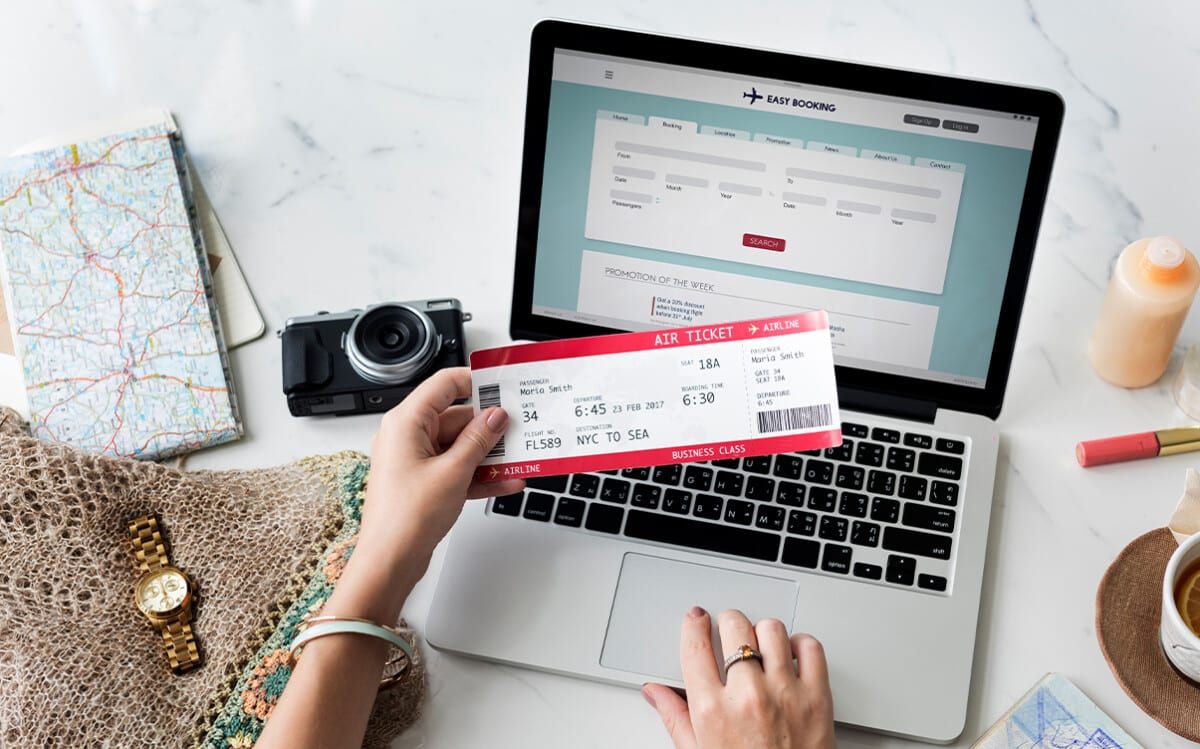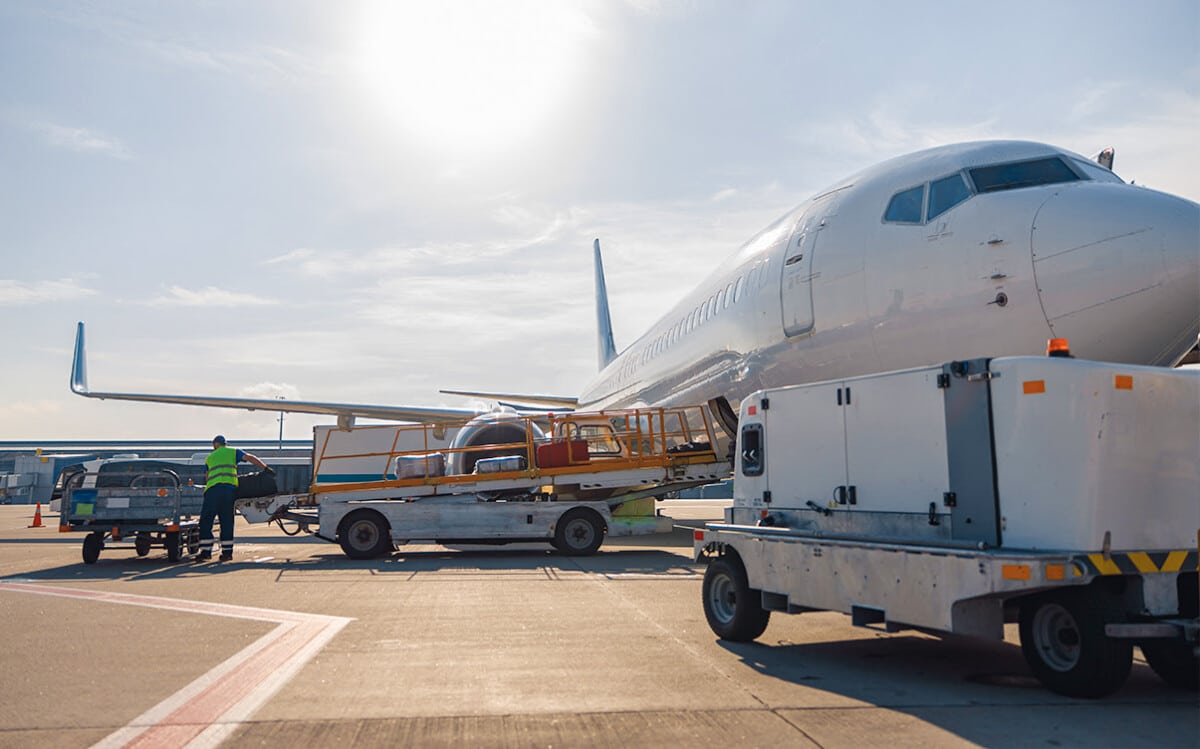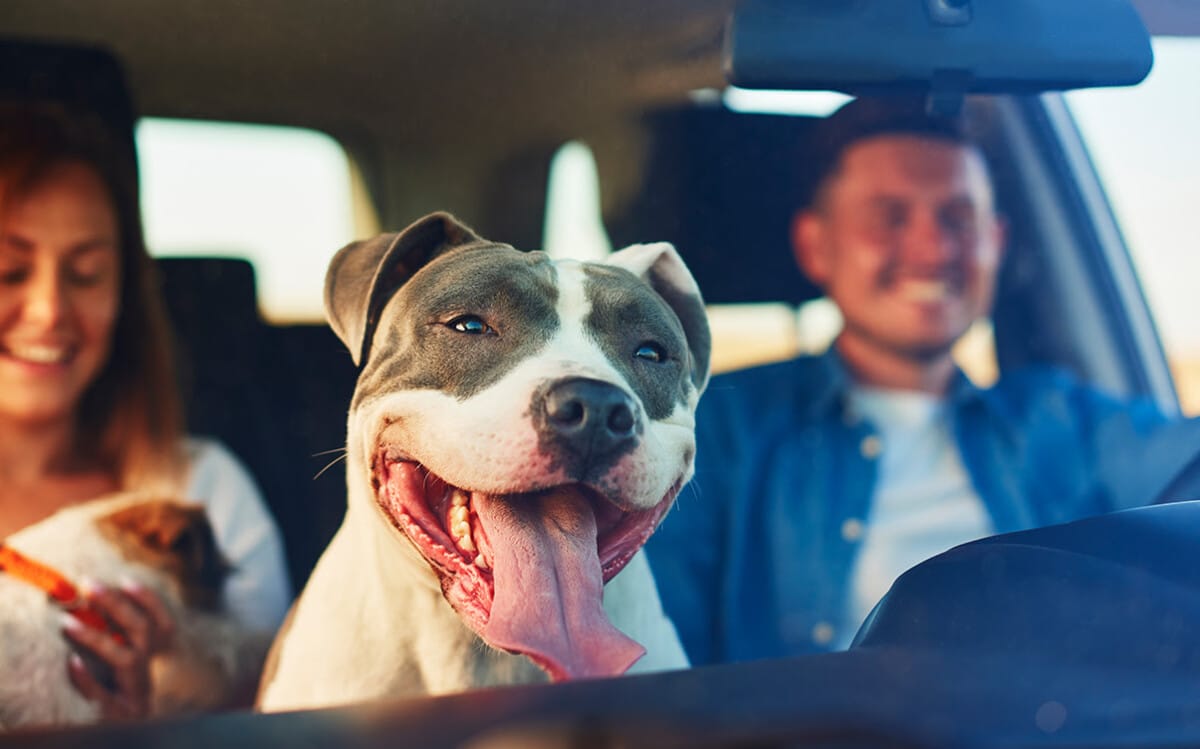Flying Delta with a Dog: Top 6 Things to Know
Disclaimer: This post may contain affiliate links. Please see our Disclosure Policy and Advertiser Disclosure for details.
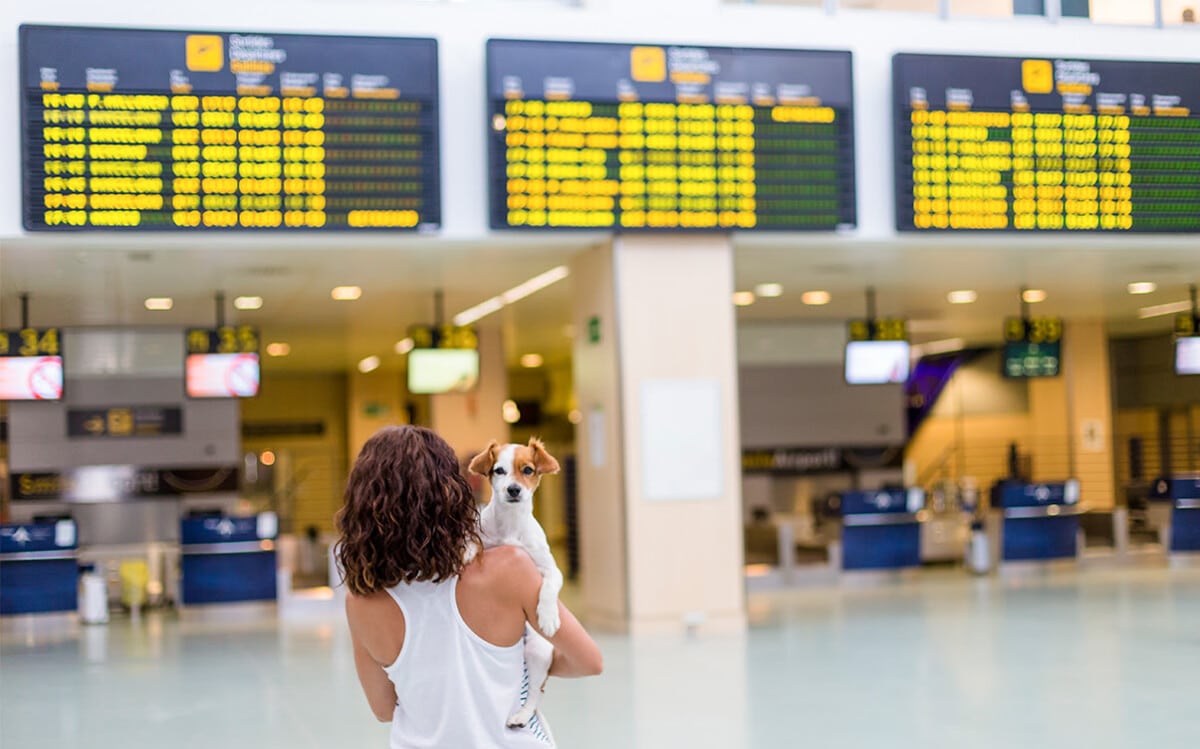
There are a ton of different things you can do in life to feel more fulfilled. You can settle down and start a family. You can travel the world and see sights other people have only dreamed of. You can start a business and build an empire. You can adopt an adorable bundle of fluff and energy and name it Poochy.
As people who chose the path of world travel, we spend a lot of time on airplanes, whether it’s from one side of the country to the other or somewhere as far afield as the Maldives. Since we’re on the go all the time, we haven’t adopted a dog just yet, but who knows what the future holds?
That said, we know a lot of our fellow adventurers like to take their canine companions with them when they travel. It’s a rough (ruff?) world out there, though, and the rules and regulations, restrictions, and requirements to travel with a dog can vary.
Rather than try to discuss every single detail that can come up when traveling with a dog – and end up with a 10,000-page blog post – we’re going to stick with just one element of travel: the actual travel portion. When you’re flying from location to location, and you want to bring your dog with you, what do you need to know?
We’ve put together a list of six of the most important details you need to know if you’re flying with your dog using Delta Airlines.
#1: The Service Animal Exemption
Before we dig in too deep, know that all of what we’re talking about is primarily for pets. Service animals are given more leeway and flexibility, both as an equality and accessibility thing and with the assumption of much better training than the average pet dog.
Specifically, this is for trained and certified service animals; emotional support animals don’t qualify. This is due to past abuse from people who clearly were bending the rules and had purchased certificates online to call any random dog their emotional support dog, causing all manner of problems from poorly-behaved animals on planes. This isn’t unique to Delta or their ruling, either; the Department of Transportation is responsible for the decision.
#2: Know the In-Cabin Restrictions
When flying with a pet, there are two options*: in the cabin and in the cargo hold. Cabin travel is obviously preferable since it’s more comfortable, and you can keep a close eye on your dog throughout the trip. Flying is scary enough for a pet that doesn’t know what’s going on with the noise, people, and pressure changes, and you have to imagine it’s worse when they’re stuck in a cargo bay instead of near you.
*: This isn’t strictly true; see #5 for more information.
Unfortunately, there’s no way to just buy a seat for your pooch and let them sit alongside you. Instead, Delta has a few requirements you need to meet.
Your dog must be able to fit inside a soft-sided carrier that fits beneath the seat in front of you. This is all the space you get, which means it’s really only suitable for small animals. Most people on Reddit and the like say a 15 lb. dog is about the upper limit of what can comfortably fit in that space, and even then, it can depend on the breed. This isn’t just a restriction for dogs; they have the same stipulation for cats and birds as well.
They also stipulate that if you have multiple small dogs, even if they can all fit inside one carrier, they need their own carriers. Only one pet per carrier, with a couple of exceptions, namely for a mother dog still weaning her puppies, or up to two puppies of the same breed and size can be in one carrier.
Once you enter the airport, your pet needs to be in the case and stay there at all times. That includes checking, waiting, boarding, takeoff, flight, landing, and everything else. They even have stern language on their site: “Failure to comply with all pet policies and keep your pet in the kennel at all times while in the airport and onboard the aircraft may result in losing the ability to travel with your pet on future flights.” On the plus side, this doesn’t say they’ll kick you off your flight then and there, but it does make the return trip challenging.
Your dog needs to meet age requirements. If you’re starting and ending your journey in the United States, your dog needs to be at least 8 weeks old. If you’re coming to the USA from outside of the country, they need to be 16 weeks old; traveling to the EU requires 15 weeks of age.
Your pet carrier counts as your carry-on. Nothing much to say about this one. If you hoped to have a backpack or gym bag with your stuff, you need to give up that space to your dog.
You aren’t allowed in certain seats. The list is on their site above, and includes bulkhead seats, emergency exit rows, seats designated as “no stowage”, flat-bed or Delta One seats, and specific rows on specific types of planes. This is generally a safety thing; you don’t want your pet to be trapped in a point of action if people need to evacuate, for example.
#3: Know the Price
This one is short and simple. Delta actually recently decreased the price of the in-flight pet add-on. It used to be $125 per pet, but it’s now only $95 per pet. However, this is also destination-dependent. If you’re flying to or from the USA, Canada, Puerto Rico, or the US Virgin Islands, it’s that price. However, if your destination is Brazil, it’s just $75, and if you’re on an international flight anywhere else, it’s $200.
All of these prices are for one direction; the return trip will have the same fee, so be prepared for that as well.
#4: Get Your Reservation Early
One of the biggest roadblocks to flying with your dog on Delta is that they actually have a limit of only a small number of pets on any given flight. It’s a surprisingly small limit, too, something like a mere 4-5 pets total. That means if you happen to be on a flight with a bunch of other people looking to bring their pets, you might be out of luck with the flight you wanted to take.
You also can’t just directly buy a pet add-on when you book your flight tickets. Instead, you need to talk to Delta directly about your reservation, to add the pet and carrier to your list. They’ll want to know the specific dimensions of your carrier, to make sure it can fit in the space allowed for it.
Unfortunately, if you buy your tickets and call to add your dog, only to find that there’s no room for them on the flight, you don’t have many options. You’ll need to find a different flight that suits your needs and has space for your pooch, and that can alter your entire timetable.
#5: Don’t Plan on Cargo
As mentioned above, there are two options for bringing your dog with you: in the cabin and in the cargo hold. This is kind of true, but not really.
The truth is, Delta doesn’t allow you to just check your dog as baggage in the cargo hold. This used to be the way you could do it, and it may still be an option on other airlines, but it’s not an option with Delta these days.
However, you can ship your pet in the cargo hold of an airplane. It’s just not using the checked baggage process. Instead, you have to go through Delta Cargo, which is their freight shipping service. This is the only option Delta offers for animals that are too large to fit in an under-seat carrier.
It’s also terribly inconvenient. You need to drop your dog off at the cargo facility at least three hours prior to the flight. You can only book the cargo flight 14 days before departure. And, worst of all, there’s no guarantee that your pet will be on the same flight as you. Their flight may be a different one and may be later (or even earlier) than your own, leading to a disconnect between your arrival time and theirs. You’ll end up spending tons of time in the airport dealing with shipping and logistics instead of enjoying your adventures.
Is this safe? By far, the biggest concern you likely have is whether or not your pooch will be safe when treated like cargo by a logistics flight. Delta keeps a veterinarian on staff and has experienced animal handlers in their loading and handling crews, so they’re really doing as much as they can to protect your dog during transit. They also make sure that each step of the way, from transportation in vans to holding areas in loading bays, is temperature-controlled for the comfort of your dog.
Unfortunately, there’s only so much they can do, and sometimes accidents can happen. Even in the best of situations, a flight is stressful, and your dog will be separated from you and constrained for the duration. Many pet owners are well advised to consider boarding their dogs at home rather than bringing them on a trip that involves a flight.
Another important note is that certain breeds – specifically, snub-nosed or brachycephalic breeds – are prohibited. This is because impaired breathing can be disrupted with flight pressure changes, and it makes it harder for the dog to cool off when overheated, both of which can be risks on a flight.
Finally, as of this writing, this option isn’t even available. Why not? Delta (and many other airlines) have placed an embargo on shipping pets. This is because there is a lot of uncertainty and variability in flights right now, with flights being delayed by hours or days, if not altogether canceled, with little or no warning. It sucks for people, but if you’ve delivered your dog three hours before a flight that is then pushed back by 12 hours, it’s devastating. The exemption to this is service animals and animals that belong to the US Military or State Department.
#6: Consider Another Option
Everyone with a dog loves their canine friend, and it’s a perfectly reasonable response to want to bring them with you to share in your adventures, see exotic sights, or simply be in arm’s reach rather than in an unknown and anxiety-inducing state at home. Thousands of people fly with their dogs every year.
Between the embargo, issues with flying in general, the restrictions on in-cabin animals, and more, though, you have a lot of roadblocks ahead of you before you even get to your destination. Then, once you’re there, you have to worry about the other details.
- Does your lodging allow dogs?
- Does the place you’re flying into, if it’s international, require a quarantine period or special shots?
- Are the attractions, trails, and other activities you plan to pursue open to dogs?
- Will your dog be an anxious, nervous wreck or get sick along the way, derailing your plans?
As terrible as it feels to say, bringing a dog with you on your adventures is often more of a burden than it is a benefit. Alternatively, you might consider driving instead of flying. Road trips are much longer, of course, but they give you more flexibility and are generally less stressful for your dog, if not for you.
So, that’s that. Delta is one of the better airlines you can take when you want to fly with a dog, but even so, the restrictions are heavy. If you can swing it, it might be a fine idea; if not, well, you might be better off boarding your dog or having a friend or family member come to pet sit while you’re gone. Whatever gives you the most peace of mind for your adventures!
Finally, make sure that you check on the actual Delta rules and current status for things like the Cargo Embargo before you get too deep into planning. Things change, and we’re not always able to update posts like this in a timely fashion, so check with the actual authorities first. Good luck!
You may also enjoy:

